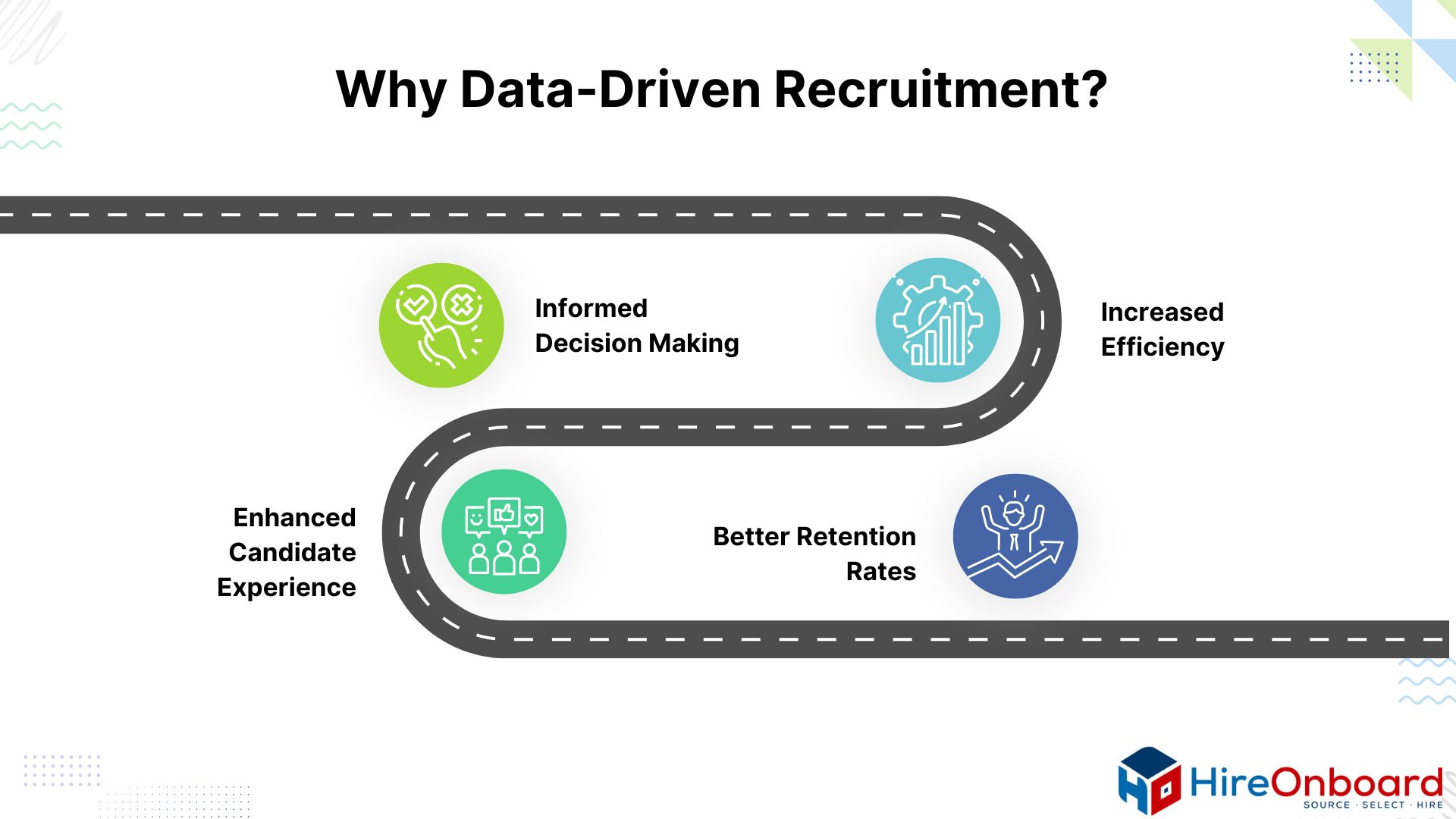Recruitment has evolved significantly, in today’s fast-paced and technology-driven world. Gone are the days when hiring decisions relied solely on gut feelings or personal recommendations. Instead, organizations are increasingly leveraging data to inform their recruitment strategies. This data-driven recruitment approach enables businesses to make more informed hiring decisions, ultimately leading to better talent acquisition and retention. In this blog, we’ll explore the key metrics that matter in data-driven recruitment and how they can transform your hiring process.
Why Data-Driven Recruitment?

Data-driven recruitment refers to the use of data and analytics to guide hiring decisions and strategies. By leveraging various recruitment metrics, organizations can enhance their hiring processes, reduce biases, and improve overall employee quality. The benefits of this approach include:
Informed Decision-Making
Data helps recruiters make decisions based on facts rather than intuition.
Increased Efficiency
Understand which recruitment strategies are working and adjust accordingly, saving time and resources.
Enhanced Candidate Experience
Analytics can highlight candidate pain points, allowing companies to streamline the application process.
Better Retention Rates
By analyzing metrics related to employee performance and engagement, companies can refine their recruitment strategies to find candidates who are a better cultural fit.
Key Metrics to Track
When implementing a data-driven recruitment strategy, several key metrics can provide valuable insights:
Time-to-Hire
Definition: The total time taken from when a job requisition is opened until an offer is accepted.
Why It Matters: Time-to-hire is a critical metric as it reflects the efficiency of your recruitment process. A long time-to-hire can lead to a loss of top candidates, as they may accept offers from other organizations. Analyzing this metric can help identify bottlenecks in the recruitment process.
Quality of Hire
Definition: A measurement of a new employee’s performance, retention rates, and overall contribution to the organization.
Why It Matters: Quality of hire evaluates how well new hires perform and integrate into your organization. By assessing the performance of new employees against their pre-hire data (such as assessments and interviews), you can refine your recruitment strategy to improve future hiring decisions.
Candidate Source Effectiveness
Definition: An analysis of which sourcing channels (job boards, social media, referrals, etc.) yield the best candidates.
Why It Matters: Understanding where your successful hires come from enables you to focus your recruitment efforts on the most effective channels, optimizing resources and enhancing your talent pool.
Offer Acceptance Rate
Definition: The percentage of job offers accepted by candidates versus the total number of offers extended.
Why It Matters: A low offer acceptance rate could indicate potential issues with your compensation packages, employer branding, or recruitment process. Analyzing this metric helps identify and address any underlying issues.
Candidate Experience Metrics
Definition: Metrics that assess candidates’ experiences throughout the recruitment process, often captured through surveys.
Why It Matters: Positive candidate experiences enhance your employer brand and can lead to higher acceptance rates. By tracking metrics like Net Promoter Score (NPS) or candidate satisfaction surveys, organizations can refine their application and interview processes.
Diversity Hiring Metrics
Definition: Indicators that measure the diversity of candidates at various stages of the hiring process.
Why It Matters: Tracking diversity hiring metrics helps organizations foster a more inclusive workplace. Analyzing the demographics of applicants, interviewees, and hires allows businesses to identify and address any disparities in their hiring process.
Recruitment ROI
Definition: A calculation of the financial return on investment from recruitment activities compared to the costs incurred.
Why It Matters: Understanding recruitment ROI enables companies to assess the effectiveness of their hiring investments. By analyzing the costs associated with recruitment and comparing them to the performance and retention of new hires, organizations can optimize their budgets and approaches.
Conclusion
Data-driven recruitment is not just a trend; it is a transformative approach that empowers organizations to make smarter, more efficient hiring decisions. By focusing on key metrics like time-to-hire, quality of hire, source effectiveness, and candidate experience, organizations can refine their recruitment strategies, attract top talent, and ultimately drive better business outcomes. As the recruitment landscape continues to evolve, those who embrace data and analytics will undoubtedly lead the way in securing the talent that shapes their future.
In a world where talent is the ultimate competitive advantage, let data guide your recruitment efforts to ensure you’re making choices that truly align with your organizational goals.


